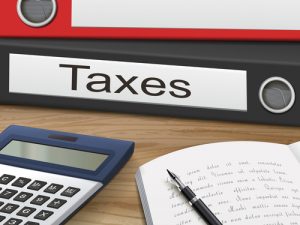 Taxpayers must get their documentation in order to prepare for tax season. Some many taxpayers have suffered losses this year because of the COVID-19 pandemic. To offset these losses, taxpayers need strategic plans for improving their tax refunds and keeping as much of their earnings as possible. Reviewing 5 tax planning tips helps taxpayers get ready for the end of 2020.
Taxpayers must get their documentation in order to prepare for tax season. Some many taxpayers have suffered losses this year because of the COVID-19 pandemic. To offset these losses, taxpayers need strategic plans for improving their tax refunds and keeping as much of their earnings as possible. Reviewing 5 tax planning tips helps taxpayers get ready for the end of 2020.
- Create and Fund a Health Savings Account
Creating and setting up a health savings account gives taxpayers an opportunity to save for future medical expenses. All funds transferred into the accounts help the individual lower their income and generate more savings on their tax implications. According to the current allowances, individuals can contribute up to $3,500 into the account, and couples contribute up to $7,000. If either party is at least 55, they can increase their contributions up to an additional $1,000. Taxpayers find out more about setting up the plans and saving on their tax implications when you visit lifemanaged.com today.
- Increase Contributions into Retirement Plans
Retirement plans are another way to transfer money and reduce the total amount of income the taxpayer has for the year. The individual plans define how much they can contribute at any given time. This includes IRAs and 401(k) plans. All funds transferred into a retirement plan aren’t taxable until the taxpayer removes the money from the account. According to the current details, the limit for any 401(k) plan is $19, 500 for anyone under the age of 55, and $26,000 for any taxpayers that are at least 55. The limits for IRAs is $6,000 for all parties under the age of 55, and taxpayers who are at least 55 receive an increase of $1,000.
- Find and Use All Tax Credits
Taxpayers have tax credits related to child care, and they could get around $2,000 in credits for children under 17 and in school. They have access to adoption credits, credits for caring for the elderly, earned income tax credit, and additional credits for dependents for which the taxpayer pays at least 50% of their annual care. A financial advisor reviews all dependents and possible credits that apply to the taxpayer.
- Ensuring Your Employer is Withholding the Right Amount
The amount the employers withhold from the taxpayer’s earnings defines how much they could get back at the end of the year. Some taxpayers increase their withholdings to get a larger tax refund at the end of the year. When calculating the potential refund, a financial advisor compares withholding amounts, and they provide advice about maximizing the benefits of the withholdings and reducing tax implications at the end of the year.
- Use All Deductions
Assessing all tax deductions helps the taxpayer determine what deductions are available to them. Taxpayers can deduct property tax, real estate tax, the interest on their home mortgage, moving expenses, gambling losses, and contributions to charities. They can student loan interest they paid throughout the year, and teachers can deduct certain educational expenses. The individual could also deduct certain medical and dental expenses, and they can deduct all money they contribute to a health savings account.
Taxpayers review a variety of options for reducing their income and tax implications. Several strategies are available to taxpayers to help them reduce the amount of taxes they pay this year. With recent events, 2020 has been a difficult year for all taxpayers, families, and communities. Reviewing ways to plan for the upcoming tax season helps the taxpayers get prepared effectively.